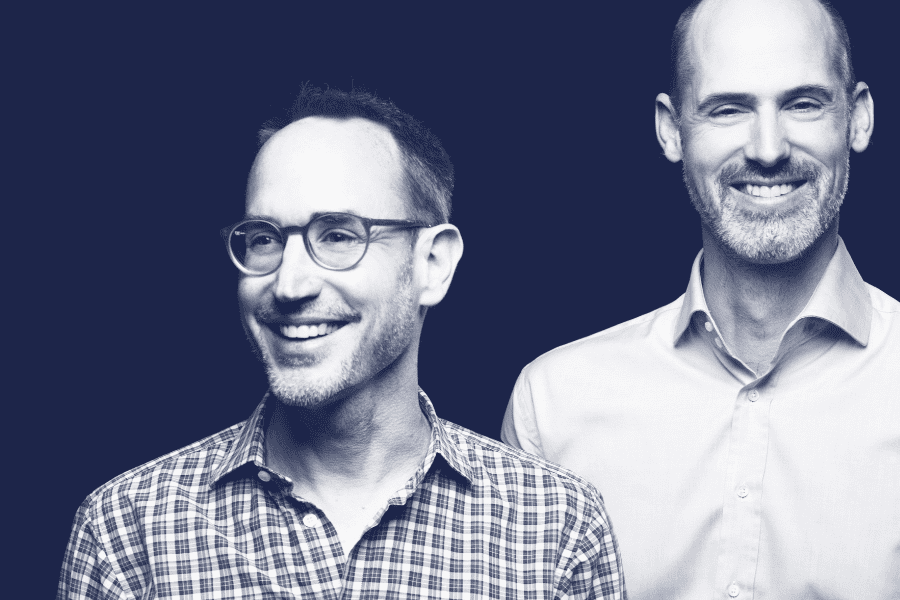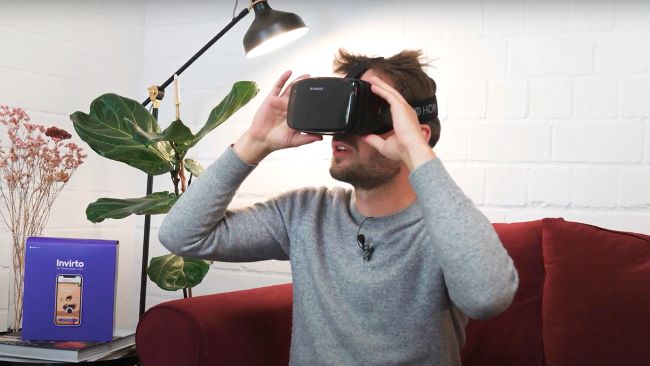The corporate health and wellbeing platform HUMANOO has gained the trust of over 750 organizations across the globe, including some of Europe’s biggest health insurers such as Techniker Krankenkasse in Germany and Helsana and CSS in Switzerland. In this interview, Co-CEO Maximilien A. Notter tells us how HUMANOO’s platform incentivizes users to pursue health activities and how this benefits the companies they work for.

Co-CEO, HUMANOO
Maximilien A. Notter has been the Co-CEO of HUMANOO since August 2020. Maximilien was previously the head of strategic projects at talent platform HeyJobs and a strategy consultant at Accenture. He has a bachelor’s in business administration from the University of Geneva and a master’s in accounting and finance from the University of St Gallen.
You joined HUMANOO in 2020 as Co-CEO. What does that mean in practical terms? How do you split responsibilities between yourself and HUMANOO’s other Co-CEO Carl-Philip Pogoretschnik?
When you share a position such as CEO, I think it’s important for each person to focus on the areas they are strongest in and avoid overlapping responsibilities as it can lead to friction. Phillip is extremely strong at sales. In the beginning, I owned operations, namely everything that was not sales, marketing or product, but also things relating to the overall structure of the company such as strategy building and internal communications. Over time, however, we realized that sales needed to be a bigger focus, so Phillip is now mostly concentrating on the revenue departments while I took over responsibility for the product and technology. But as Co-CEOs, the most strategic decisions that have a company-wide impact are still, of course, taken jointly.
What is the story behind the founding of HUMANOO?
Philip and his brother had started a company providing on-site physiotherapy to large employers in the South of Germany. As the business gained traction, they got a request from one or their largest clients, who asked if they could provide their service to 35,000 employees in more than 300 locations. Suddenly, it became clear that a physical offline solution would not be feasible. As a consequence, Philip’s brother stayed in Bavaria and continued building up the offline business while Philip moved to Berlin and founded HUMANOO. The original idea for HUMANOO was therefore driven by an understanding that there was already a demand in the market for such services.
What does HUMANOO do?
HUMANOO is a corporate and insurance wellbeing platform that helps individuals build sustainable healthy habits and improve their health day by day. For users, our service takes the form of an app through which they can train, motivate themselves, set challenges and win rewards (for themselves or as contribution to environmental initiatives) to name only a few features. All the content available in the app is developed in-house by HUMANOO to ensure the highest quality. Users can also connect to other useful services such as one-on-one coaching through the app.
On the corporate side, it’s a health operating system, a steering element for health measures. You can integrate the health measures you’re driving in the company, whether offline or online, into a single tool and manage your whole portfolio of health measures from it. We can also track the activities of users on the app and provide companies with aggregated and anonymized insights into the well-being of their employee base. We can help identify health risks and compare a company’s health to existing benchmarks. This type of reporting is very useful when developing and steering health policies within a company.
There are many well-known consumer products that address wellbeing, why would a person choose HUMANOO over them?
There are a few factors at play here. Cost is the most straightforward one, as our solution is not only 100% free for the end-user, but can also actually be net-positive for them, as we provide rewards. Our unique approach, giving points for health activities happening within or outside of our app, and allowing users to redeem these points for actual money, vouchers or societal impact initiatives, helps users get that extra bit of motivation. Finally, and most importantly, our holistic approach to health is crucial. We know that the needs of users change within the year, over the years and across generations. This causes each user to have to buy multiple subscriptions to address their needs. With HUMANOO, they can access services across all areas of wellbeing in one tool. This benefits employers and insurers too, as they can have unified management and reporting on the impact of their initiatives.
How well do these rewards work?
Only 15% of the population is intrinsically motivated to take care of their health. That’s a very low number. So how do you motivate the rest of the 85%? You first need to understand what the means of extrinsic motivation at your disposal are. Number one is social. That’s why we do team challenges. If you see your colleague doing something, then you might do something as well. Number two is monetary. We provide actual cash rewards. Number three is convenience. If you can pay for your groceries with your health activities, why not do it? Number four is societal impact. We allow people to remove plastic from the ocean or plant a tree through their activities. We had to find all these different ways to speak to people, to motivate them to take care of their health and it’s been wildly successful. It’s also one of the reasons why we have such a high engagement and retention rate on the app.

Invest in Startups
As one of Europe’s most active venture capital investors, we grant qualified private investors access to top-tier European startups. With investments starting at EUR/CHF 10’000, you can build your own tailored portfolio over time and diversify across stages and sectors.
How big is the engagement rate?
It always depends on how much the company is willing to communicate about our product and the strength of the partnership we have with the HR teams. However, the industry benchmark for employee activation tends to be between 11 and 15%. We usually get numbers close to 40-50%.
How many people are using HUMANOO right now?
In places like Switzerland, where we work with insurance companies as well, the number of users is very high. Right now, about 1% of the Swiss population uses our product daily. If we were to expand that to monthly users, the number would go up to 4% of the population.
Why is HUMANOO so appealing to the Swiss market?
I’m not sure whether it’s the specificities of the Swiss market itself, or the partnerships that we’ve been able to build in the Swiss market. We were very lucky that we managed to build strong relationships with the largest insurance players in Switzerland, most notably Helsana and CSS. They trusted us from the start and became early adopters of our product. The Swiss insurance market is also small, you have three big insurance companies that have access to 5.3 million policyholders from a population of 8.7 million people. The competition is fierce, and I think the need for differentiation was perhaps one of the reasons Switzerland became such an early adopter of HUMANOO.
Last summer, you signed a partnership with Techniker Krankenkasse, one of the largest health insurance companies in Germany. Can you tell me a bit more about that?
It was by far the largest corporate wellbeing deal that was ever signed in Europe. Techniker Krankenkasse has a 25% market share of corporate insurance policies in Germany. And they’ve decided to partner with us to provide their corporate clients with a steering instrument for their health measures. We’ve developed a common solution under a white label with the branding of Techniker Krankenkasse called Work Life Portal which their sales team went to market with at the start of 2023. This partnership is crucial for us because it gives us access to the biggest sales network in Germany in terms of corporate insurance policies. We can dock onto that and tackle the German market in an accelerated way, paving the way for such collaborations with local champions in other European countries.
What are the challenges ahead for HUMANOO?
I think that creating an ecosystem around health, around wellbeing, and making it a seamless journey throughout different providers, is the big challenge. We now understand that if you are in a market with so many point solutions, it doesn’t mean that you have to build your own point solutions to beat them all. What you need to do is be at the center of everything and make sure that you can provide one space where people can access all these amazing services. This enables the users to access the services they need, when they need them and the companies to track and steer their measures, through unified, holistic reporting. That’s where the market is heading right now and we have already taken a leading role in this transition.
Written by
WITH US, YOU CANCO-INVEST IN DEEP TECH STARTUPS

Verve's investor network
With annual investments of EUR 60-70 mio, we belong to the top 10% most active startup investors in Europe. We therefore get you into competitive financing rounds alongside other world-class venture capital funds.
We empower you to build your individual portfolio.
More News
16.03.2023
How digital therapies can help children overcome learning disorders
Neurodevelopmental disorders that hinder children’s ability to read, write and perform calculations affect 250 million children worldwide. Left untreated, these disorders persist into adolescence and adulthood, leading to unemployment and serious mental health issues. Can the emerging field of digital therapeutics offer a solution? We talked to the CEO of Mila, François Vonthron, to find out.
05.10.2022
“French health startups are in a very good position”
Caroline Sai leads Angels Santé, Europe’s biggest health-focused business angel club. In this interview, she tells us which topics in health are hot right now, and which are not.
28.06.2022
Sympatient is building the first digital anxiety clinic
When startups want to raise money, they can choose between different options. The most commonly used instrument is equity, but other sources of financing such as debt, grants, SAFEs and convertible loans are frequent, too. This article explains what investors need to know about convertible loans, the most common financing form besides equity.
Startups,Innovation andVenture Capital
Sign up to receive our weekly newsletter and learn about investing in technologies that are changing the world.




